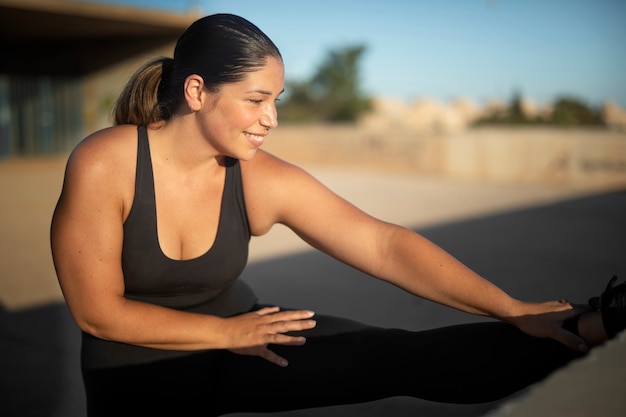Safe & Effective No-Equipment Kettlebell Alternatives: 25-Minute Back-Friendly Core Routine
If you're dealing with back pain but still want to build strength and improve core stability, you don’t need heavy weights or a gym membership. This 25-minute no-equipment kettlebell alternative routine is designed specifically for people with back sensitivity. It mimics the functional benefits of kettlebell training—without the strain—using bodyweight movements that emphasize posture, control, and core engagement.
Why This Routine Works for Back Pain
Traditional kettlebell workouts often involve dynamic swings, lifts, and rotations that can aggravate lower back issues if form is compromised or if the spine isn’t conditioned. This routine eliminates equipment entirely, focusing instead on isometric holds, controlled mobility, and functional strength—all crucial for supporting spinal health.
By replacing high-impact or loaded movements with bodyweight alternatives, you maintain the core-engaging benefits of kettlebell training while reducing spinal compression and shear forces.

The 25-Minute Back-Safe Routine
Perform each exercise for 45 seconds, followed by 15 seconds of rest. Complete the circuit once, then repeat for a second round. Total time: approximately 25 minutes.
- Dead Bug (45 sec) – Lie on your back, arms extended toward the ceiling, knees bent at 90 degrees. Slowly extend one leg while lowering the opposite arm overhead. Keep your lower back pressed into the floor. This teaches anti-extension and protects the lumbar spine.
- Bird-Dog (45 sec) – On hands and knees, extend one arm and the opposite leg simultaneously. Hold briefly, then return. Focus on stability, not range. Builds coordination and spinal support.
- Forearm Plank (45 sec) – Hold a straight line from head to heels on forearms and toes. Engage the core and glutes. Modify by dropping to knees if needed. Strengthens deep core muscles without spinal loading.
- Side Plank (45 sec per side) – Lie on your side, support on forearm, lift hips. Keep body in a straight line. Modify by bending knees. Targets obliques and lateral stability, essential for back support.
- Glute Bridge (45 sec) – Lie on your back, knees bent, feet flat. Lift hips by squeezing glutes. Avoid overextending the spine. Strengthens posterior chain, reducing lower back strain during daily movements.
- Wall Sit (45 sec) – Back against wall, slide down until knees are at 90 degrees. Keep core tight. Builds leg endurance with minimal spinal load.
- Standing Marches (45 sec) – Stand tall and slowly lift one knee at a time, maintaining upright posture. Improves balance and activates core without spinal flexion.
Tracking Your Progress
Consistency is key. Use a simple tracking method to stay motivated and monitor improvements:
- Workout Journal: Note each session’s date, modifications used, and how your back felt during and after.
- Performance Metrics: Track how long you can hold planks or how smoothly you perform bird-dogs over time.
- Pain Scale: Rate your back discomfort from 1–10 before and after each session. A downward trend indicates progress.
- Mobility Check: Weekly, test simple movements like toe touches or spinal rotations to assess flexibility gains.

Motivation Cues to Stay on Track
Staying consistent with a back-friendly routine requires mental resilience. Use these cues to reinforce commitment:
- "I’m building resilience, not just strength." – Every rep supports a healthier spine.
- "Form over speed—precision protects my back." – Focus on control, not intensity.
- "Today’s effort is an investment in pain-free movement tomorrow."
- "I listen to my body—it knows what I need." – Honor rest when needed.
Tips for Long-Term Success
- Warm-Up First: Spend 3–5 minutes doing cat-cow stretches and shoulder rolls to prepare your spine.
- Stay Hydrated: Discs in your spine rely on hydration for shock absorption.
- Pair with Walking: Add a 10-minute daily walk to improve circulation and spinal nutrition.
- Avoid Prolonged Sitting: Get up every 30 minutes to reduce pressure on your lower back.
Final Thoughts
You don’t need a kettlebell—or any equipment—to build a strong, resilient core. This 25-minute routine offers a practical, safe, and effective way to enhance functional strength while protecting your back. By focusing on control, consistency, and body awareness, you can reduce discomfort and improve your quality of movement over time.
Start today, track your journey, and let every mindful movement bring you closer to a stronger, pain-free you.
















